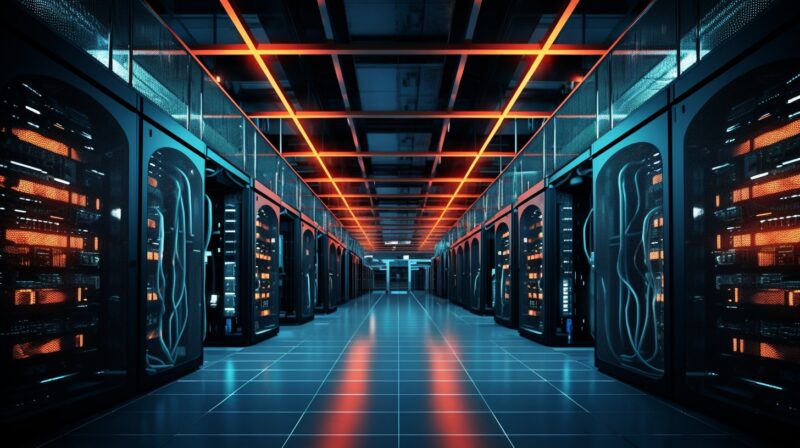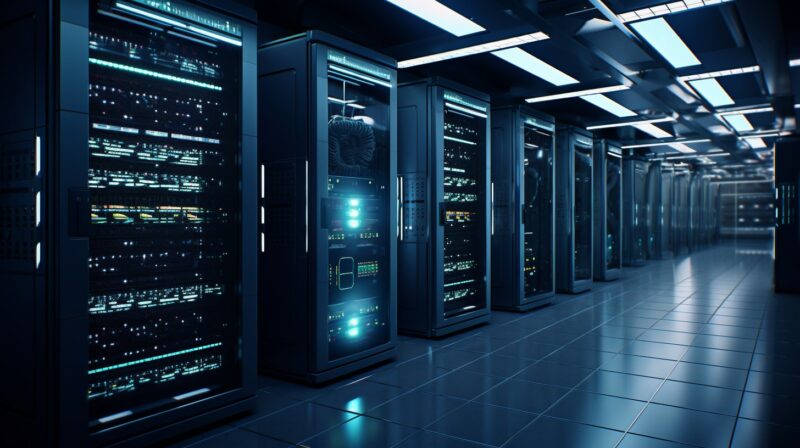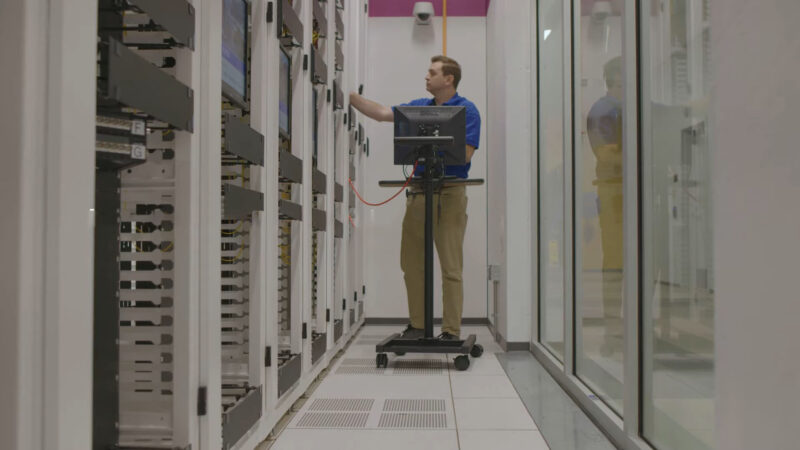Data centers are a key component of many companies’ business strategies. Managed service providers (MSPs) and cloud-based developers need the rich connectivity options that only a data center’s infrastructure can provide. But with so many data center facilities to choose from, it can be difficult to determine which ones are capable of providing superior service today, but also power the technological revolution of tomorrow.
Before making any decisions, every customer should review a potential facility’s data center infrastructure services to determine its long-term potential as an IT partner. Asking the data center manager a few tough questions is another good place to start when evaluating a facility.
5 Secrets of Data Center Infrastructure

Data Center Redundancy
While most data centers are quick to claim their systems are fully redundant, the terminology has become so muddled in recent years that their actual backup capabilities may not be clear. For MSPs and other companies looking to deliver a variety of bundled services to customers, it’s worth taking a closer look at the approaches a facility takes to data center redundancy.
The first thing to look for is the quality of the data center’s uninterruptible power supply (UPS) systems. A reliable facility will have thorough auditing policies in place to ensure that backup batteries are ready to spring into action at any moment.
The key differentiator is often whether data center redundancy incorporates fault tolerance or high availability strategies. Fault tolerance is what most people think of when they hear the word “redundancy.” It incorporates two identical systems running in tandem on a completely separate circuit.
When one system goes down, the backup system takes over without sacrificing uptime. This solution can be very expensive and complex to implement, so many facilities utilize high-availability systems. Rather than mirroring systems entirely, this approach uses clusters of servers with failover capabilities that restart applications the moment a primary server crashes. While cheaper to implement and less vulnerable to software problems, they do have more downtime lag.
Power Density
Many data center cabinets were designed to accommodate lower-power densities than most of today’s servers provide. Over the last decade, however, vast improvements in servers have even changed the way facilities measure their power capacity.
Wattage per square foot used to be the standard measurement, but today’s data centers measure power density at the server rack level. Ten years ago, 4-5 kW per rack was considered average, but that number is now closer to 15-20 kW per rack in high-performing facilities.
Unfortunately, as power increases, servers generate more heat and require more efficient cooling equipment. When looking at a data center, customers should consider whether or not the facility can make efficient use of its available power. Just because it claims to provide high-density server deployments doesn’t mean it can get the most out of them. Substandard or outdated cooling systems, for instance, could prevent those servers from running at peak potential.
This could also result in equipment and software failures due to overheating, which will contribute to increased incidents of downtime. Cutting edge cooling infrastructure controlled by AI and machine learning algorithms is helping data centers manage power consumption and heat more effectively than ever before.

Uptime SLA Requirements
Every assessment of data center infrastructure should begin with a thorough examination of its service level agreement (SLA). This document provides details about the services a facility promises to deliver and stipulates penalties for the data center if it fails to comply. As legally binding documents, uptime SLAs are critical for customers looking to protect their data and assets.
Expressed as a percentage, the uptime SLA’s guarantee indicates how often its servers will be up and running. Modern, enterprise-level data centers should provide at the very least 99.99% SLA uptime, with every additional “9” delivering a higher level of reliability. The uptime SLA will also lay out various responsibilities the data center has with regards to technical support, transparency, and remuneration.
Remote Hands
Providing services through a data center can sometimes be a challenging task. Implementing systems and building up networks within the data center environment takes planning and expertise that even experienced IT personnel may not possess. A facility that offers qualified technicians who can make migration and integration efforts work together smoothly helps customers focus more of their valuable resources on delivering services that benefit their business.
When problems do develop, having remote hands personnel on call 24x7x365 to address issues quickly reduces the negative impact of downtime. These technicians are already familiar with the particulars of the data center environment and can address maintenance issues and other emergencies more effectively than external IT teams.
With a good remote hands team in place, service-based companies like MSPs can devote more of their IT resources into developing new offerings for their customers rather than troubleshooting.

Visibility
Understanding what’s happening in a data center environment is absolutely crucial for any company that delivers services through that infrastructure. They need to be able to know how power and network performance are being affected by traffic in order to plan effectively and determine how to best deploy their assets.
Data center infrastructure management (DCIM) software can help provide this information. Security is also a huge concern when it comes to visibility.
Sophisticated DCIM platforms make it easier to track assets at all times to ensure that every piece of equipment is where it’s supposed to be at all times. Any company hoping to utilize a data center environment to build or bundle services needs to know what safeguards a facility has in place to protect against cyberattacks and data breaches.
A robust business intelligence platform can provide a comprehensive picture of every relevant detail about data center infrastructure. If a facility makes it difficult to review their operations or is less than transparent regarding its policies, service providers and MSPs will have a hard time reassuring their own customers that their sensitive data and valuable assets are in safe hands.
Partnering with a data center is an important decision for any organization. By reviewing key aspects of data center infrastructure management, companies can predict whether or not it will be able to meet their needs and allow them to expand business opportunities in the future by providing a reliable IT environment for a range of services.
FAQ
What is the role of physical security in data center infrastructure?
Physical security is paramount in data center infrastructure. This includes measures like biometric access controls, CCTV surveillance, security personnel, and secure perimeters to ensure unauthorized personnel cannot access the data center.
How do data centers handle fire threats?
Modern data centers are equipped with advanced fire detection and suppression systems. This often includes clean agent fire suppression systems that can put out fires without damaging equipment.
What is the significance of location in data center infrastructure?
Location plays a crucial role. Data centers need to be situated in areas that are less prone to natural disasters like earthquakes, floods, or hurricanes. Additionally, proximity to major network hubs can reduce latency.
How do data centers ensure data redundancy?
Apart from hardware redundancy, data centers often replicate data across multiple locations. This ensures that even if one facility faces an outage, the data remains accessible from another location.
What is PUE and why is it important?
PUE, or Power Usage Effectiveness, is a metric used to determine the energy efficiency of a data center. It’s the ratio of total energy used by the facility to the energy delivered to the IT equipment. A lower PUE indicates higher efficiency.
How do data centers handle network connectivity and redundancy?
Data centers typically have multiple internet service providers and redundant network hardware to ensure continuous uptime and high-speed connectivity.
Are there certifications that indicate the reliability of a data center?
Yes, data centers often pursue certifications like Uptime Institute’s Tier Certification or ISO standards which indicate their reliability and adherence to best practices.
Final Words
Choosing the right data center infrastructure is not just about current needs but also about anticipating future challenges and growth. As technology evolves and data consumption grows exponentially, partnering with a forward-thinking data center becomes crucial.
By understanding the nuances of data center infrastructure, from power density to security measures, organizations can make informed decisions that will serve them well in the digital age.
Related Posts:
- 10 Things to Know Before Playing at an Online Casino
- Securing Digital Infrastructure: How Hosting Choices…
- Ways New Entrepreneurs Can Compete in the Tech…
- Data Center Design 101: Everything You Need to Know
- Data Center Networking 101: Everything You Need to Know
- Data Center Server Racks and Cabinets: What You Need to Know








